Click on images to enlarge
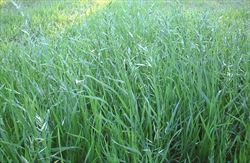
dense infestation (Photo: Sheldon Navie)
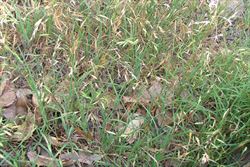
infestation of older plants (Photo: Sheldon Navie)
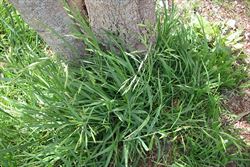
habit (Photo: Sheldon Navie)

leaves (Photo: Sheldon Navie)
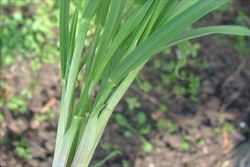
close-up of leaf sheaths and undersides (Photo: Sheldon Navie)

close-up of stem, leaf sheath and ligule (Photo: Sheldon Navie)

drooping seed-head (Photo: Sheldon Navie)

close-up of flower spikelets, showing florets topped with tiny awns (Photo: Sheldon Navie)

mature flower spikelets (Photo: Sheldon Navie)
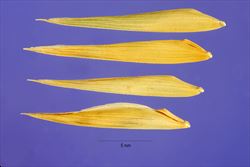
close-up of seeds (Photo: Steve Hurst at USDA PLANTS Database)
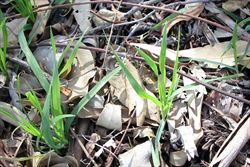
young plants (Photo: Sheldon Navie)

close-up of straw-coloured mature flower spikelets (Photo: Sheldon Navie)
Scientific Name
Bromus catharticus Vahl
Synonyms
Bromus catharticus Vahl var. catharticusBromus catharticus Vahl var. rupestris (Speg.) Planchuelo & P.M. PetersonBromus schraderi KunthBromus stamineus sensu J.H. WillisBromus unioloides (Willd.) KunthBromus willdenowii KunthCeratochloa cathartica (Vahl) Herter.Ceratochloa unioloides (Willd.) P. Beauv.Festuca unioloides Willd.
Family
Gramineae (South Australia)Poaceae (Queensland, New South Wales, the ACT, Victoria, Tasmania, Western Australia and the Northern Territory)
Common Names
brome grass, broom grass, broncho grass, orchard grass, prairie grass, rescue grass, Schrader's bromegrass
Origin
This species is thought to have originated in South America (i.e. Venezuela, Brazil, Bolivia, Colombia, Ecuador, Peru, Argentina, Chile, Paraguay and Uruguay).
Cultivation
Some forms of the species are sown for pasture in areas with warm and temperate climates.
Naturalised Distribution
A widely naturalised species that is very abundant in the south-eastern parts of Australia. It is most common and widespread in Victoria, New South Wales, ACT and south-eastern Queensland. Relatively common in the southern regions of Western Australia, in south-eastern South Australia and in Tasmania. Present in some parts of the Northern Territory and in other parts of Queensland, South Australia and Western Australia.
Also naturalised on Lord Howe Island and Norfolk Island, and widely naturalised in other parts of the world (e.g. New Zealand, USA, Hawaii and La Réunion).
Habitat
A common weed of untended areas, roadsides, parks, disturbed sites, gardens, orchards, vineyards, drainage lines and crops in temperate, sub-tropical and occasionally also semi-arid regions. Also a weed of a wide range of natural habitats such as dry coastal vegetation, heathlands, grasslands, grassy woodlands, open woodlands and riparian areas.
Habit
A short-lived (i.e. annual) or long-lived (i.e. perennial) tufted grass with an upright (i.e. erect) or spreading habit that usually grows 0.2-1 m tall, but occasionally reaches up to 1.5 m in height.
Distinguishing Features
-
a relatively short-lived tufted grass usually growing up to 1 m tall.
-
its large openly branched seed-heads have a nodding appearance.
- these seed-heads are made up of numerous large (1.5-4 cm long and 4-10 mm wide) flattened flower spikelets.
- these flower spikelets are made up of 6-12 relatively large florets (12-20 mm long).
- these florets are often tipped with short awns (0-4 mm long) and break apart separately at maturity.
Stems and Leaves
The stems (i.e. culms) are robust, hairless (i.e. glabrous) and unbranched. They can be either upright (i.e. erect) or spreading.
The leaves are made up of a leaf sheath, that partially encloses the stem, and a spreading leaf blade. Leaf sheaths are often lightly to densely covered in short or long hairs (i.e. they are pilose) and where the leaf sheath meets the leaf blade there is a small membranous flap (i.e. ligule) 0.5-4 mm long. This structure is either rounded at the tip or has toothed margins (i.e. with an obtuse or lacerate apex). The flat leaf blades (10-45 cm and 3-15 mm wide) are long and narrow (i.e. linear) and gradually narrow to a pointed tip (i.e. acute apex). The margins of the leaf blade are entire and somewhat rough to touch (i.e. scabrous) and their upper surfaces are usually somewhat hairy (i.e. sparsely pilose).
Flowers and Fruit
The seed-head (i.e. inflorescence) is a loose, often drooping, panicle (12-40 cm long) with several branches that are usually arranged in groups (i.e. whorls). The relatively large flower spikelets (15-40 mm long and 4-10 mm wide) are borne on stalks (i.e. pedicels) 1-3 cm long and are greenish or purplish-green in colour. They are composed of a pair of bracts at the base (i.e. glumes) 8-17 mm long and above these are 6-12 small flowers (i.e. florets). These florets (12-20 mm long and 3-7 mm wide) consist of a pair of bracts (i.e. the palea and lemma), one of which may have a short awn (0-4 mm long) at its tip (i.e. apex), three stamens with anthers 0.5-4 mm long, and a two-branched feathery stigma. Flowering occurs mainly during spring and summer (i.e. from September to December).
The flower spikelets turn pale brown or straw-coloured as they mature and break up at maturity, usually leaving the glumes behind (i.e. the spikelets disarticulate below each fertile floret). The 'seeds' (i.e. grains or caryopses) are elongated in shape (i.e. linear), flattened, and hairy towards the tip (i.e. with a pubescent apex). They remain enclosed in the two floral bracts (i.e. the palea and lemma) when they are shed.
Reproduction and Dispersal
This species reproduces entirely by seed. Seeds may be spread about by mowers, slashers and in dumped garden waste and are dispersed larger distances in contaminated agricultural produce (e.g. fodder). They can also be dispersed by wind and animals, and become attached to vehicles and clothing.
Environmental Impact
Prairie grass (Bromus catharticus) is regarded as an environmental weed in many parts of south-eastern Australia, particularly in New South Wales and Victoria. It forms dense swards that outcompete native ground layer plants and prevents natural regeneration in bushland. In Victoria it is a weed of riparian shrubland communities in the Goldfields Bioregion and of wetlands along the Lower Broken River. It has also been recorded in conservation areas (e.g. Phillip Island Nature Park) and is a commonly reported weed species in remnant plant communities that are home to the threatened Euroa guinea-flower (Hibbertia humifusa subsp. erigens). It is also a weed of bushland (i.e. on the Cumberland Plain near Sydney) and conservation areas (e.g. Berkeley Nature Reserve in Woolongong) in New South Wales.
It has also been recorded in numerous conservation areas in South Australia (i.e. Cobbler Creek Recreation Park, Onkaparinga River National Park, Black Hill Conservation Park, Cleland Conservation Park, Sturt Gorge Recreation Park and Cudlee Creek Conservation Park).
Legislation
Not declared or considered noxious by any state government authorities.
Similar Species
Prairie grass (Bromus catharticus) is similar to short brome (Bromus brevis) and the Chilean bromes (Bromus lithobius and Bromus cebadilla). These species can be distinguished by the following differences:
- prairie grass (Bromus catharticus) has a relatively loose seed-head with spreading or drooping branches. Its flower spikelets are borne on long stalks (i.e. pedicels) 10-30 mm long and are relatively large (15-40 mm long). The glumes generally do not have any awns, while the florets usually have short awns (less than 4 mm long).
- short brome (Bromus brevis) has a relatively compact seed-head with upright or spreading branches. Its flower spikelets are borne on short stalks (i.e. pedicels) 1.5-5 mm long and are relatively small (9-24 mm long). Neither the glumes or the florets generally have any awns, and if present they are very short (less than 3 mm long).
- Chilean brome (Bromus lithobius) has a relatively compact seed-head with upright or spreading branches. Its flower spikelets are borne on short stalks (i.e. pedicels) 1-12 mm long and are relatively small (14-27 mm long). The glumes generally do not have any awns, while the florets usually have short awns (3-6 mm long).
- Chilean brome (Bromus cebadilla ) has a relatively loose seed-head with spreading or drooping branches. Its flower spikelets are borne on short stalks (i.e. pedicels) 3-15 mm long and are moderately large (20-30 mm long). The glumes generally have awns, and the florets usually have relatively long awns (3-10 mm long).
There are several other brome grasses (Bromus spp.) present in Australia, but these can be distinguished from prairie grass (Bromus catharticus) by their larger awns.

